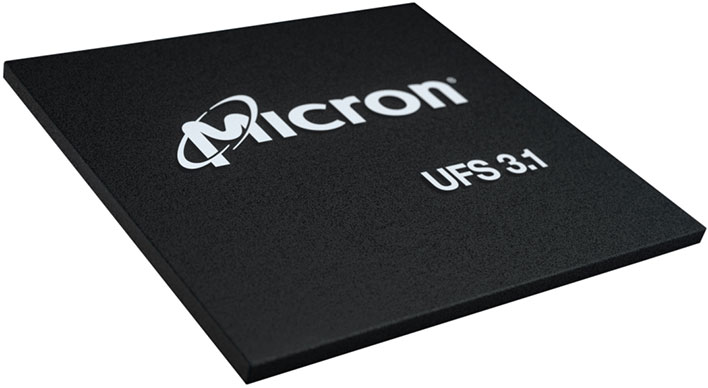Micron Ships First 176-Layer NAND UFS 3.1 For Speed-Hungry 5G Phones
When it comes to smartphones, the primary system-on-chip (SoC) and camera arrangement tend to dominate the discussion, as does the overall build quality and whatever unique features a particularl handset might bring to the table. Storage deserves some attention too, though. To that end, Micron today announced it has begun volume shipments of the industry's first 176-layer NAND Universal Flash Storage 3.1 for mobile devices.
It has been eight months since Micron pounded its chest at delivering first 176-layer 3D NAND solution, "achieving unprecedented, industry-pioneering density and performance." Today's announcement sees the same core technology ported over to the mobile space, where it will infuse high-powered 5G smartphones with faster storage capabilities.
"5G delivers multi-gigabit speeds to mobile devices, and a high-performance hardware foundation is critical to powering these lightning-fast mobile experiences," said Raj Talluri, senior vice president and general manager of Micron’s Mobile Business Unit. "Our breakthrough 176-layer NAND supercharges smartphones with unparalleled performance, delivering rich multimedia content to consumers’ fingertips in a flash."
What kind of breakthrough is Micron talking about here? These chips are specifically engineered for high-end 5G phones and, according to Micron, its discrete UFS 3.1 mobile NAND serves up sequential writes that are up to 75 percent faster than the prior generation 96-layer UFS 3.1 storage solution. Sequential reads are up to 70 percent quicker.
On the sequential write side of the equation, that translates to 1,500MB/s at the top end.. If we borrow Micron's math, that kind of write speed enables downloading a 10-minute 4K resolution YouTube video stream in a fraction of a second (0.7 seconds, to be precise), or a two-hour 4K movie in just 9.6 seconds. Woof!
Micron is also touting 15 percent faster mixed workload performance compared to the previous generation storage solution. What that essentially boils down to is faster app launches, as well as peppier switching between multiple apps for an overall smoother smartphone experience.
"Without storage as a bottleneck, users can take advantage of 5G's speeds with the powerful combination of UFS 3.1 and Micron's 176-layer NAND," Micron says.
Apparently Micron was able to improve endurance, too. The company says its 176-layer UFS 3.1 mobile solution offers up to twice the total writes written compared to its 96-layer product, "meaning twice the data can be stored without degrading reliability and the smartphone's life span can be extended for even the heaviest of users." We'll take it.
Micron's volume shipments of 176-layer UFS 3.1 consists of 512GB, 256GB, and 128GB capacities. It will show up first in Honor's Magic 3 series, and should find its way to other high-end 5G phones not long afterward.


